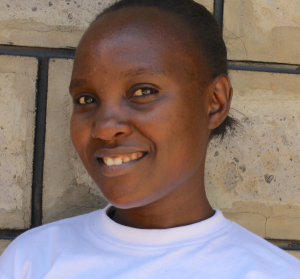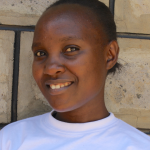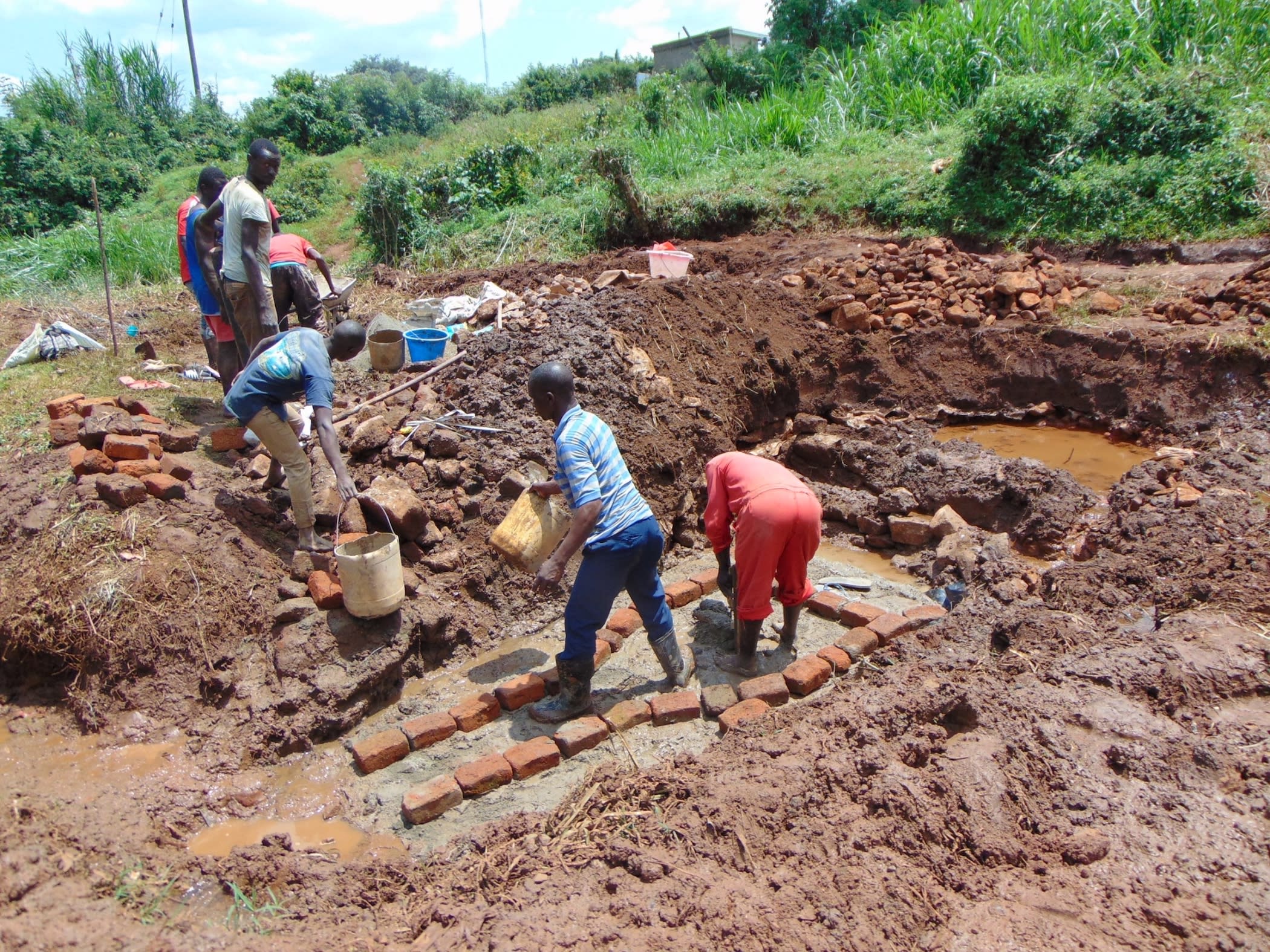Lutonyi is a semi-urban area located a few kilometers from Kakamega Central Business District. The specific area we visited has mud homes that are rented by people who come to the area to do casual labor. These homes are an easy walk from the busy highway that leads out of Kakamega Town to Mumias.
We met our contact person, Mr. Saif, at a lumber yard off the highway and he led us deeper into the community where we got to meet many other people.
Most men report that their casual labor entails helping out at a mechanic shop, carpentry shop, or with masonry. Women say they're able to garden a little bit on their small pieces of land, which also helps generate income for their families. Some women have found customers who pay a small fee for them to do laundry.
We met Mrs. Lubumbashi who outlined a normal day: She wakes up early to prepare her children for school. After the husband has left for his job and her children for school, she then embarks on household chores such as sweeping and fetching water. After that, she prepares lunch for her husband who has been contracted at a nearby construction site. He opts to come home for lunch so that he can save his small lunch allowance. The children also come home for lunch at 1 pm because their school is not far away.
"In the evening, I prepare dinner, make sure my kids and my husband have had a warm bath, then I supervise my children as they do their homework. After this, I can call it a successful day," Mrs. Lubumbashi said proudly.
Being such an urban area, you can see pipes and taps coming out of the ground at many homes. But Mr. Saif explained to us that these taps are dry. He paid a visit to Lake Victoria North Water Services and he learned that since the area is so densely populated, the service cannot afford to pipe water all the way to their homes each day. They say that the current pipes are far too low pressure, and they'd need larger pipes to get water out to these homes. When Mr. Saif pressed in, the service told him that the government was not allocating money in the budget for that kind of water service improvement.
This has forced the 348 people in this area to turn to an open, dirty water source to meet their needs. That source is Lutomia Spring, where we found women washing their clothes. The community told us the dirty water from the spring is used for drinking, cooking, cleaning, and anything else they need it for. People admitted that even if the taps started working, they might prefer Lutomia Spring because they can all come and draw water for free.
People bring containers of all different sizes and dunk them directly under the water's surface. The water gets dirtier after a container stirs up the mud at the bottom. But when it rains for a while, the spring looks like a big muddy pool.
Most of the hospital visits made by the people using Lutomia Spring are usually due to stomachache and fever. When lab tests are done, the results are usually typhoid or malaria. Typhoid is rampant due to drinking water from this unprotected spring, while malaria is affecting this community because there is stagnant water that's home to mosquitoes.
"My children suffer from frequent stomachache and diarrhea. I often thought that this was a result of eating their friend's contaminated food at school. Now that you have come and pointed out that our water is open to contamination, I will make an effort to be boiling drinking water as I wait for the spring to be protected," Mrs. Lubumbashi said.
What we can do:
Spring Protection
Fetching water is predominantly a female role, done by both women and young girls. Protecting the spring and offering training and support will, therefore, help empower the female members of the community by giving them more time and efforts to engage and invest in income-generating activities.
Protecting the spring will ensure that the water is safe, adequate, and secure. Construction will keep surface runoff and other contaminants out of the water. There will be stairs down to the collection point and a pipe that can easily fill water containers. With the community’s high involvement in the process, there should be a good sense of responsibility and ownership for the new clean water source.
Training
Community members will attend hygiene and sanitation training for at least two days. This training will ensure participants have the knowledge they need about healthy practices and their importance. The facilitator plans to use PHAST (Participatory Hygiene and Sanitation Transformation), CLTS (Community-Led Total Sanitation), ABCD (Asset-Based Community Development), group discussions, handouts, and demonstrations at the spring. One of the most important topics we plan to cover is the handling, storage, and treatment of water. Having a clean water source will be extremely helpful, but it is useless if water gets contaminated by the time it’s consumed.
Training will also result in the formation of a committee that will oversee operations and maintenance at the spring. They will enforce proper behavior around the spring and delegate tasks that will help preserve the site, such as building a fence and digging proper drainage. The fence will keep out destructive animals, and the drainage will keep the area’s mosquito population at a minimum.
Sanitation Platforms
At least 30% of households that fetch water from Lutomia Spring don't have a pit latrine of their own. Those families share with their neighbors.
Most latrines we visited are made of mud walls and wood floors. The floors are not cleaned regularly because the wood can rot away and endanger the pit latrine users.
On the final day of training, participants will select five families that should most benefit from new latrine floors.
Training will also inform the community and selected families on what they need to contribute to make this project a success. They must mobilize locally available materials, such as bricks, clean sand, hardcore, and ballast. The five families chosen for sanitation platforms must prepare by sinking a pit for the sanitation platforms to be placed over. All community members must work together to make sure that accommodations and food are always provided for the work teams.

 Protected Spring
Protected Spring
 Rehabilitation Project
Rehabilitation Project










































